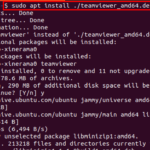In the first part of this blog series, we covered what the term ‘OTA’ means and some key advantages and considerations of using OTA technology in IoT. Read more about what OTA means in the blog post here.
Devices are everywhere but they all need maintenance. Maintaining household gadgets such as laptops, printers and smart watches has become easier over the years as update technology evolves. Today, users do not have to even think about updates – they can seamlessly take place in the background or overnight. These updates take place over-the-air (OTA)
OTA solutions are important for a number of reasons. Delivering consistent, reliable and robust software updates to any platform is a huge challenge. Delivering such updates to low-powered, inaccessible, and often remotely administered embedded IoT devices, anywhere in the world, is intricately harder. That is why being able to roll-out OTA updates at scale should be an important consideration for device manufacturers and software developers who are looking to choose an operating system to develop on. Here’s how OTA updates make their lives easier.
1. Security
One of the key reasons why OTA is so important is the agility to keep devices secure. The ability for devices to receive updates without being physically plugged means that the manufacturer of the device or software that is being used can easily release updates at any frequency. If a new security vulnerability is discovered, within a few hours the fix can be developed and the patch sent out to all affected devices. This technology enables devices to be kept secure much more easily. Having frequent patching encourages more secure software.
2. Product development
Using OTA technology doesn’t just promote security updates to be sent to devices. It also encourages new functionality to be rolled out. When developers create a new feature, for example, the software can be updated rapidly over-the-air. There’s no need to wait for more features to be ready and do a larger rollout. With OTA updates, it’s up to the hardware or software manufacturer to decide how rapidly they want to push new functionality. Sometimes there is an unexpected bug in the software too. With OTA updates, a fix can easily be sent out to resolve the issue. This ability to roll out features on a more frequent cadence encourages more rapid product development as new functionality can evolve more quickly.
3. Cost-effective maintenance
If devices need to be plugged in each time they require an update, either for improved security or functionality, it would mean that the devices may not receive updates in a timely manner. They may be left in a vulnerable state, either in users’ hands or left in the field. With the power of OTA updates, devices can be distributed around the world, in places where it may not be feasible for a technician to reach them regularly. Choosing OTA technologies improves product experience and opens up the way devices can be used, as you are not limited by the physical location of the hardware. Minimising the need for technicians to have physical access to hardware saves a huge amount of time and money. Automating updates using management platforms and over-the-air technology further saves time and money, and can hugely simplify maintenance at scale.
OTA updates in the field
Canonical offers sophisticated OTA technology for IoT devices and computers around the world. A number of IoT customers use this technology in the field to power their devices with Ubuntu Core. One such customer is Screenly, a world-leading San Francisco-based company transforming screens into powerful digital signs. Their software powers over 10,000 screens across 75 countries.
To keep deployed devices up-to-date with the latest security fixes and features, Screenly originally relied on home-grown infrastructure to deliver over-the-air (OTA) patches to devices in the field. However, this framework was expensive and time consuming to maintain. As the fleet scaled up, devices were occasionally being left nonfunctional in partially updated states. This forced the company’s development team to spend significant time writing recovery code.
Rather than continuing to spend time and resources on its in-house OTA infrastructure, Screenly decided to look for an existing solution that would enable it to leverage the established expertise of a trusted third-party partner. After a comprehensive market evaluation, Ubuntu Core stood out as an ideal fit. Screenly takes care of everything through the IoT App Store, ensuring a smooth, hands free experience for its users. In fact, “Automatic Updates’’ now features prominently on Screenly’s homepage as one of its key value propositions. Read more about Screenly’s story.
OTA updates for the future
OTA updates in IoT are extremely important for the operation, maintenance and distribution of devices. The capability for new devices grows as OTA technology continues to improve, unlocking more sophisticated rollback mechanisms and scaling. Harnessing the power of OTA can unlock new features for a range of devices globally.
The global Snap Store utilises OTA technology and can be used by anyone for free. To harness this technology for larger-scale IoT projects, learn more about the dedicated Snap Store.
Explore the following links to learn more:
- How to implement OTA updates for IoT
- What does OTA mean? [Part I]
- A practical guide to IoT lifecycle management
- Top 5 IoT challenges and how to solve them
- Guide to embedded Linux: make or buy?
- OTA updates for Linux
If you are looking for ways to advance your next IoT project, please get in touch or chat with us in the forum.
Discover more from Ubuntu-Server.com
Subscribe to get the latest posts sent to your email.


